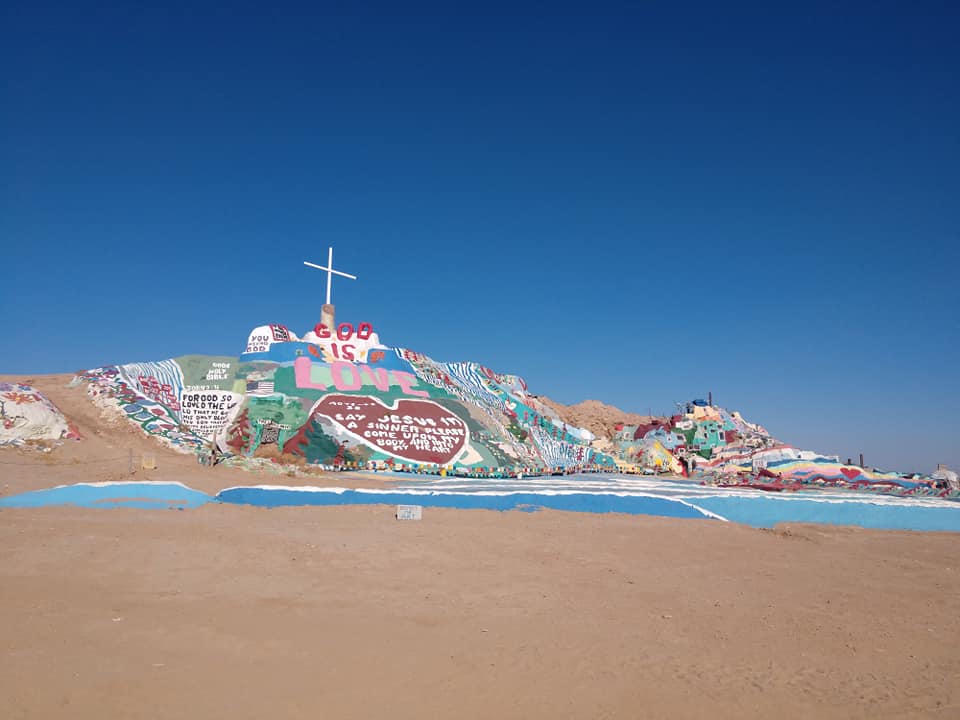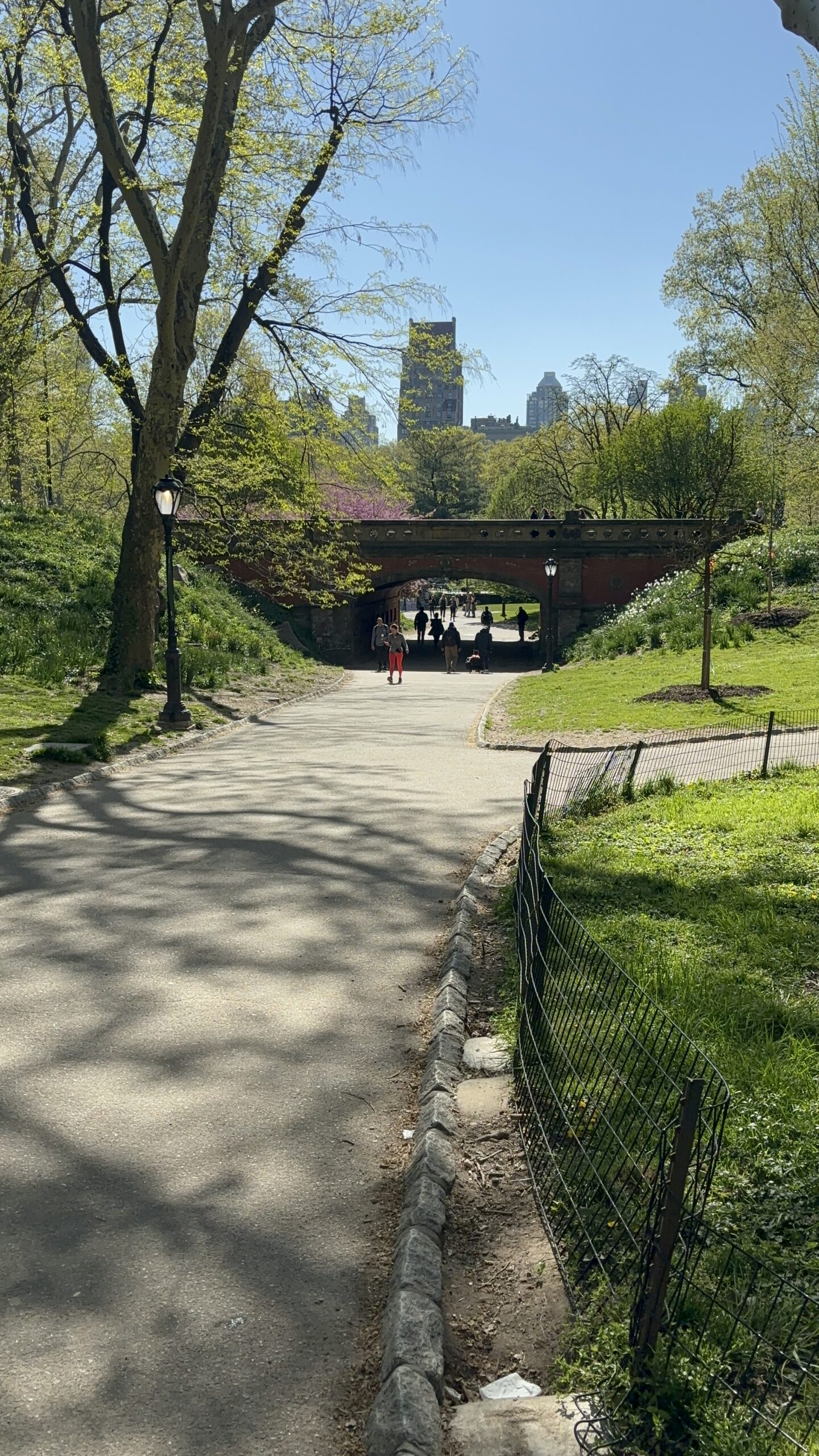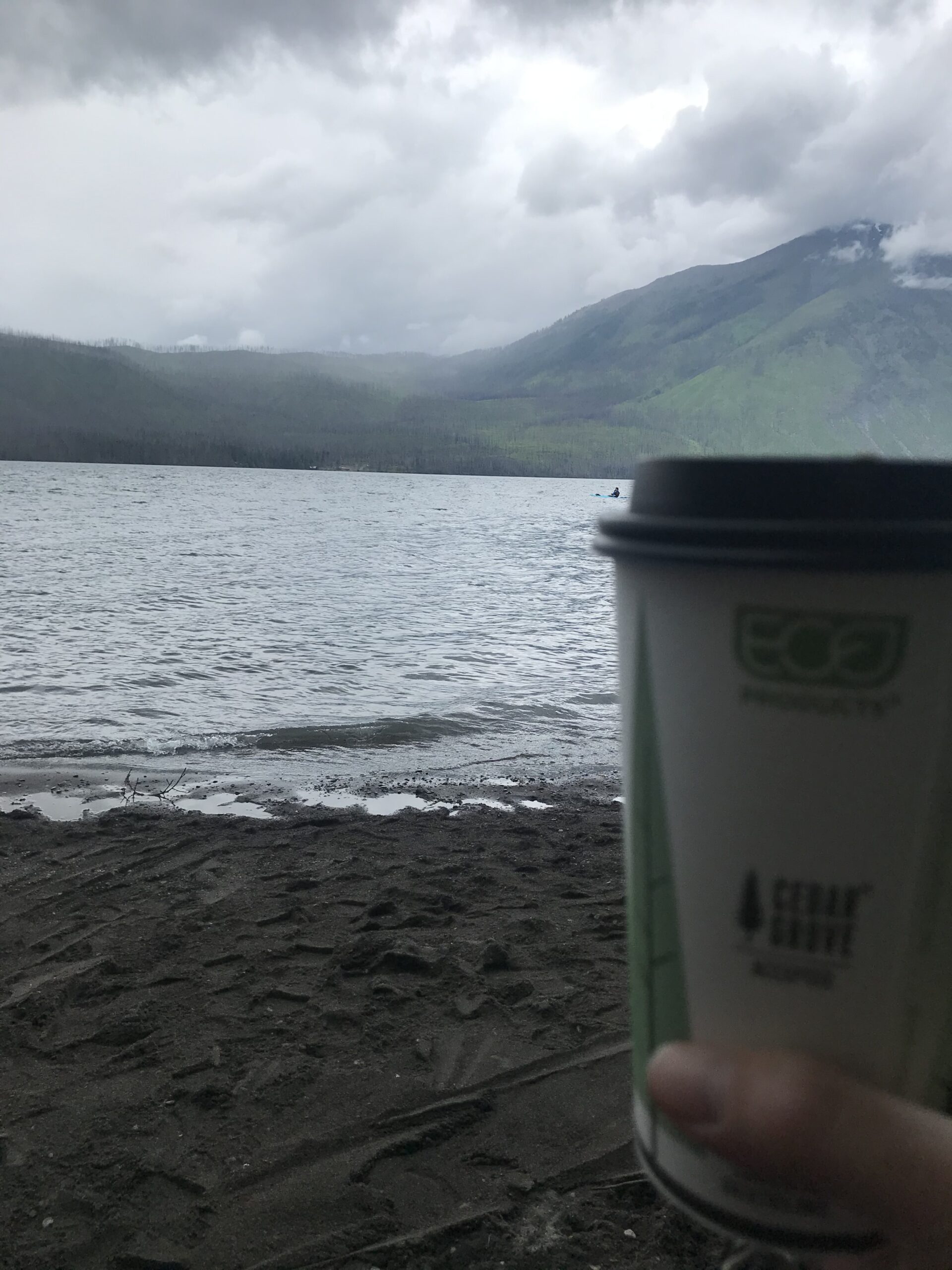Craters of the Moon National Monument: 5 Great Reasons to Visit
In July 2020, my husband, our girls, and I took an unplanned detour to Craters of the Moon National Monument during our epic 6,000-mile road trip.
We hadn’t originally intended to visit, but after rerouting due to the riots in Seattle and Portland, we found ourselves exploring this rugged landscape. It may have been a spontaneous stop, but we have no regrets—it was a fantastic experience in the middle of nowhere! My only disappointment was that we didn’t realize it was an International Dark Sky destination, so we went to bed at nine p.m.
Things To Know About Craters of the Moon Before You Go
Nestled in the remote expanse of central Idaho’s Snake River Plain, Craters of the Moon National Monument is a hidden gem. Formed by ancient volcanic activity, this fascinating landscape truly lives up to its name, with vast fields of hardened lava, cinder cones, and rugged terrain that feels like stepping onto another planet.
The Monument was established on May 2, 1924, and later expanded by President Clinton in 2000. By 2002, it gained the designation of Craters of the Moon National Preserve and is a part of the United States National Park Service, further protecting its unique ecosystem and geological features.
It’s remote, so you won’t see me recommending food. When you go, be sure to check out my food section to make something great.
Best Time to Visit Craters of the Moon
Spring (March–May):
Spring is a beautiful time to explore Craters of the Moon on foot or by bike. While the Loop Road remains closed to vehicles, it’s open for hiking and biking, allowing you to experience the monument’s quiet solitude without the summer crowds.
This is also the best time to catch the wildflower bloom, with vibrant colors peaking from late May to mid-June. Temperatures are cooler, making for a comfortable outdoor adventure, but you’ll want to dress in layers as the weather can be unpredictable.
Summer (June–August):
Summer is your best bet for full access to Craters of the Moon. The Loop Road opens to vehicles, and all trails are accessible, allowing you to explore the park.
With full accessibility comes the heat—temperatures can soar during the day, so be prepared with plenty of water, sun protection, and perhaps an early start. Despite the heat, summer offers long days for exploring the park’s stunning volcanic landscapes.
Fall (September–November):
Like spring, fall is a quiet time at Craters of the Moon. The Loop Road is once again closed to vehicles but open to hikers and cyclists.
The cooler weather is perfect for outdoor activities, and the landscape takes on a rugged beauty as the season changes. Fall is a great time for those seeking solitude and fewer crowds. Be aware that temperatures can drop quickly, especially at night.
Winter (December–February):
For a unique experience, visit Craters of the Moon in winter, when the landscape is transformed into a snowy wonderland. The Loop Road is groomed for cross-country skiing and snowshoeing, offering a peaceful way to explore the monument’s frozen beauty.
Remember that no snow clearing occurs on the trails, so off-trail areas may present challenges like pits and jagged rocks. Bundle up and enjoy the crisp air and pristine snow, just make sure to be prepared for the extreme conditions that winter can bring.
What To Pack for Craters of the Moon
Comfortable Shoes:
The park’s terrain is largely rocky and uneven, so wearing good, supportive hiking shoes is essential. Ensure they’re broken in to avoid blisters and offer good traction.
Water:
Staying hydrated is crucial, especially in the park’s dry, open areas. Please bring a refillable bottle or hydration pack to reduce your carbon footprint. There are limited spots to refill water, so come prepared!
Sunscreen, Hat, and Sunglasses:
Sun protection is a must. There’s very little shade in the park, so apply sunscreen liberally and wear a wide-brimmed hat and sunglasses to protect yourself from the intense sunlight.
Food:
Since there are no dining options within the park, bring your meals and snacks to fuel your adventure. High-energy, portable foods like trail mix, sandwiches, and fruit are great options for a day of exploration.
Flashlight or Headlamp:
A flashlight or headlamp is essential for exploring the park’s caves. These caves can be quite dark, and reliable lighting will make your exploration safer and more enjoyable.
Clothing:
Your clothing choices should vary depending on the time of year. In the summer, lightweight and breathable clothing will keep you cool, while fall and spring call for layers that can be adjusted throughout the day. Winters can be frigid, so bundle up with insulated layers, a warm hat, and gloves.
A Good Camera and Tripod:
Pack a good camera and tripod to capture the stunning night sky. You can photograph the stars and the Milky Way on a clear night.
Cave Permit:
If you plan to explore the lava tubes, you’ll need a free cave permit, which can be obtained at the visitor center. This ensures you follow the park’s protocols for protecting the caves and the living bats.
First Aid Kit:
Packing a small first aid kit outdoors is always wise, especially in remote locations. A kit with basics like bandages, antiseptic wipes, and tweezers will be helpful in case of minor scrapes or blisters.
How to Get to Craters of the Moon
By Plane
The closest airports are located in
- Hailey, Idaho (60 miles)
- Idaho Falls, Idaho (84 miles)
- and Twin Falls, Idaho (90 miles).
Once You’re On the Road
Craters of the Moon National Monument is easily accessed from U.S. Highway 20/26/93. The main entrance is 24 miles northeast of Carey, Idaho, and 18 miles southwest of Arco, Idaho.
Reminder: This is the last time you can get groceries. Stock up now if you have not already!
Craters of the Moon National Monument is easily accessed from U.S. Highway 20/26/93. The main entrance is 24 miles northeast of Carey, Idaho, and 18 miles southwest of Arco, Idaho. Keep an eye out for signs along the highway that mark the park’s boundary and the turn onto the park road.
It’s important to note that digital navigation can be unreliable here and may guide you down unpaved roads leading to remote, undeveloped areas. To avoid this, enter the address for the Robert Limbert Visitor Center (1266 Craters Loop Road, Arco, ID 83213) into your GPS or navigation app. This ensures you’re routed correctly to the visitor-friendly parts of the park, all accessible via paved roads.
For reference, the park entrance is located at:
- Latitude: 43° 27.711’N
- Longitude: 113° 33.791’W
We highly recommend starting your visit at the Robert Limbert Visitor Center. The staff here can provide valuable tips for exploring the monument safely. For those planning to venture into the more remote areas of the preserve managed by the Bureau of Land Management (BLM), additional preparation is needed, including a high-clearance, 4-wheel-drive vehicle.
By Plane
The closest airports are located in Hailey, Idaho (60 miles), Idaho Falls, Idaho (84 miles), and Twin Falls, Idaho (90 miles), providing convenient options for those flying into the region.
Look for signs along the highway marking the park’s boundary and the turn onto the park road.
It’s important to note that digital navigation can be unreliable here and may guide you down unpaved roads leading to remote, undeveloped areas. To avoid this, enter the address for the Robert Limbert Visitor Center (1266 Craters Loop Road, Arco, ID 83213) into your GPS or navigation app. This ensures you’re routed correctly to the visitor-friendly parts of the park, all accessible via paved roads.
For reference, the park entrance is located at:
- Latitude: 43° 27.711’N
- Longitude: 113° 33.791’W
We highly recommend visiting the Robert Limbert Visitor Center. The staff here can provide valuable tips for exploring the monument safely. For those planning to venture into the more remote areas of the preserve managed by the Bureau of Land Management (BLM), additional preparation is needed, including a high-clearance, 4-wheel-drive vehicle.
Where To Stay When Visiting Craters of the Moon
Lava Flow Campground
I highly recommend staying within the National Monument at the Lava Flow Campground. It’s conveniently located near the visitor center and many of the park’s best hikes.
The campground is open for vehicle access from April or May until November, depending on when Loop Road opens and closes. During winter, you can still camp here by hiking in from the visitor center and snow camping with a free permit.
To claim a campsite, leave a personal item at your desired site, then register and pay for it using a credit card at the automated fee machine (cash or checks are not accepted).
Campsites cost $15 during the regular season, $8 in the off-season, and they’re free from December through March.
Reminder: Don’t forget to place your registration receipt in the box on the campsite post.

Arco Inn
The Arco Inn Motel is about 19 miles from Craters of the Moon for a more traditional stay. It’s basic but clean, with WiFi available, and since it’s family-run, you’ll likely interact with the owner during your stay, adding a personal touch to your visit.
Moose Crossing RV Park
Located about 35 minutes from the monument, Moose Crossing RV Park offers a bit more variety with RV sites and two tiny homes available for rent. Both cabins come equipped with WiFi, refrigerators, and microwaves, and you’ll also have access to a convenience store, gas grills, and a picnic area.
Things To Do When Visiting Craters of the Moon
Check Out the Visitors Center
A visit to Craters of the Moon should always have a stop at the Robert Limbert Visitor Center, where you can gather everything you need for an enriching day in the park.
Start by picking up a park map to help guide you along the trails and points of interest. Inside, the museum exhibits offer an engaging look at the park’s volcanic features and history (it’s where I learned about the area’s designation as an International Dark Sky Park).
If you’re collecting National Park stamps, don’t forget to stamp your passport book here.
Planning to explore the lava tube caves? This is where you’ll obtain your free cave permit after a brief screening to protect the local bat population from White-nose Syndrome.
The visitor center also features educational films about the park’s unique landscape, seasonal ranger programs, guided walks, and evening talks that offer fascinating insights into the area’s geology and ecology.
There’s a small park store where you can pick up books, maps, and souvenirs. Amenities like restrooms and water stations will prepare you for a day of adventure.
Open year-round, the visitor center operates daily from 8:00 AM to 6:00 PM in summer and from 8:00 AM to 4:30 PM in winter, though it closes on major holidays like Thanksgiving, Christmas, and New Year’s Day.
Drive the Scenic Loop
Craters of the Moon’s Loop Road may be a short drive, but the landscapes you’ll encounter will make you feel like you are on another planet!
The road winds through the preserve, offering stunning views of the unique volcanic terrain, which makes for a slow and scenic journey. We took our time, traveling slowly enough that I could even hop on the back of our van and capture some of the incredible sights on film.
Starting at the Robert Limbert Visitor Center, the Loop Road connects you to several key areas of the park, including hike trailheads and a parking area for exploring the lava tube caves.
Be sure to pull over at the designated viewpoints and trailheads to fully appreciate the landscape’s beauty. But take your time because this drive immerses you in the rugged and otherworldly environment that defines the Craters of the Moon.
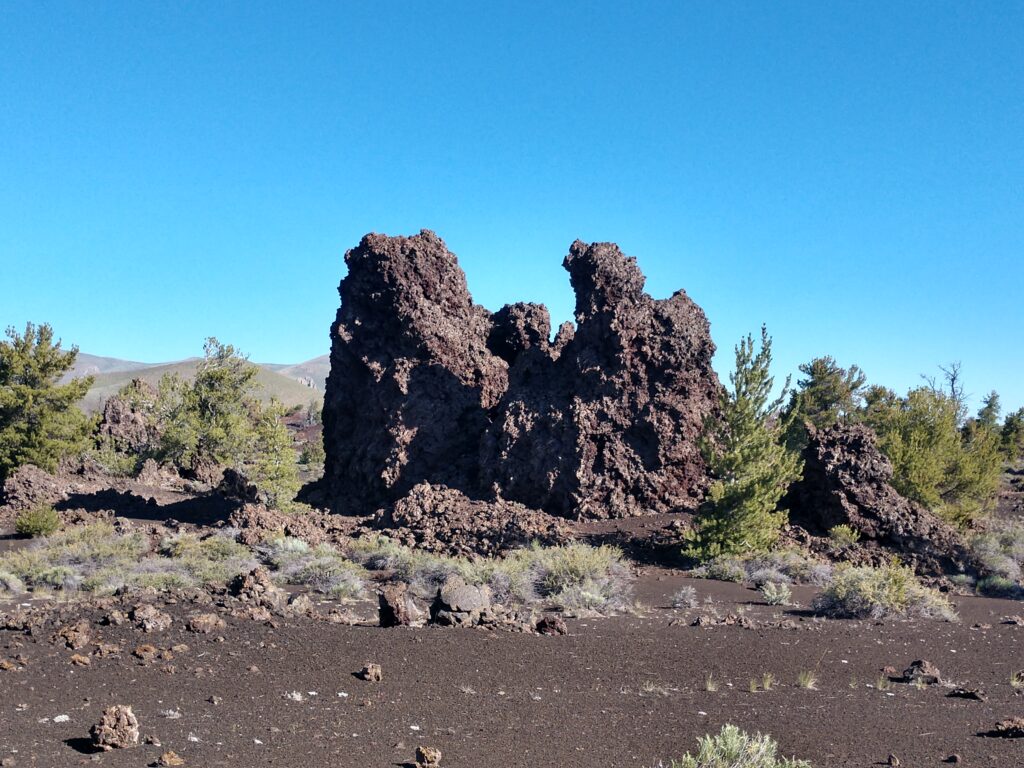
Hike the Inferno Cone Trail
The Inferno Cone Trail may be short at just 0.4 miles (0.8 km), but don’t let its length fool you—this steep hike offers a bit of a challenge.
The ascent can feel challenging, but the reward at the top is well worth the effort. Once you reach the summit, you’re treated to sweeping 360-degree views of the Great Rift, the vast Snake River Plain, and the stunning Pioneer Mountains. On particularly clear days, you might even glimpse the Teton Range, located 100 miles to the east.
Though the trail is steep, it’s an excellent option for hikers seeking a quick adventure with a big payoff. Take your time on the climb and bring water, as the trail is exposed with no shade.
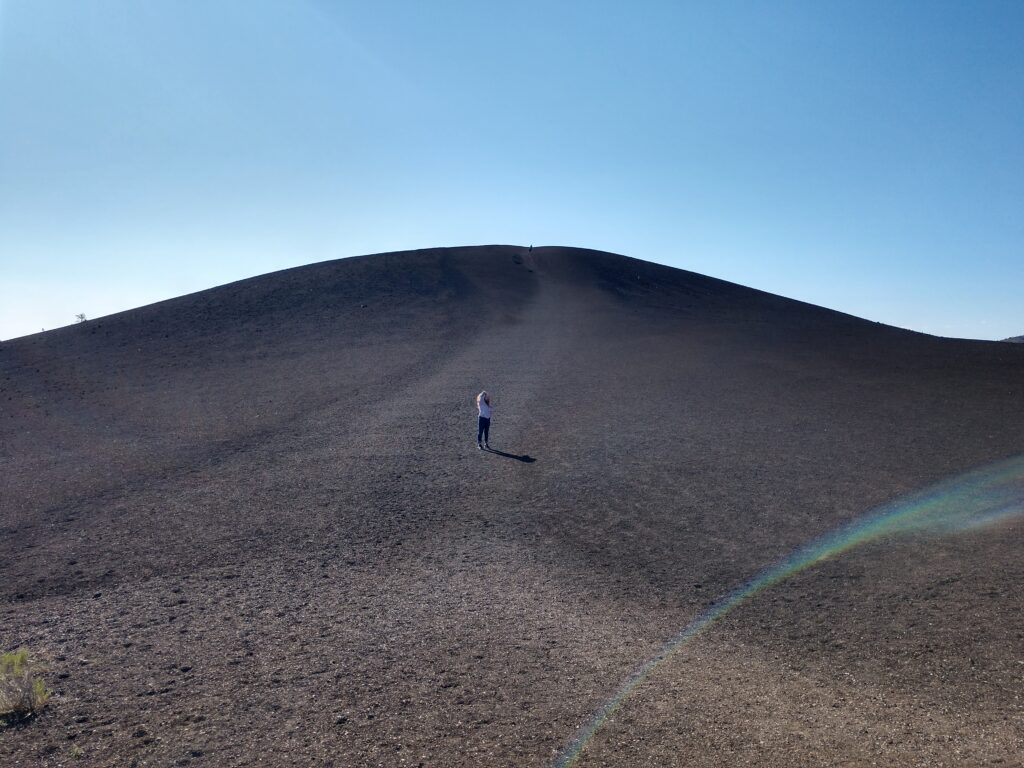
Explore the Caves
Craters of the Moon National Monument has five caves you can explore.
The trailheads for these caves are accessible from the one-way Loop Road.
- Buffalo Cave, the first cave, can be reached via the spur road leading to the Tree Molds Trail and Broken Top Loop Trail.
- The other four caves are located along the Caves Trail near the end of the Loop Road.
Before entering the caves, be sure to come prepared. A headlamp and flashlight are essential as it gets extremely dark inside, and temperatures can be pretty chilly, so bringing a jacket is a good idea. Additionally, wearing a helmet for protection is recommended, especially in Buffalo Cave, which the NPS rates as difficult due to its tight, rocky entrance and low ceilings that require you to crouch or crawl in certain sections.
Visitors must obtain a free permit from the Robert Limbert Visitor Center before entering any caves to protect the delicate cave ecosystem and the local bat populations.
This is especially important due to the threat of White-nose Syndrome, a fungal disease that has caused over 7 million bat deaths in the U.S. since 2005.
While humans aren’t at risk, we can unintentionally carry the fungus on clothing or shoes, making it crucial to follow park regulations to help preserve these unique environments.
Final Thoughts on Craters of the Moon National Monument
Craters of the Moon National Monument offers a unique adventure for those seeking a truly awe-inspiring experience. Whether you’re drawn to the geological wonders, the stargazing opportunities in this International Dark Sky Park, or the challenge of navigating rugged terrain, this park delivers in ways few other places can.
Our family’s unplanned visit to Craters of the Moon was a highlight of our road trip. The sense of solitude and beauty make this destination well worth a detour. Add it to your list!

